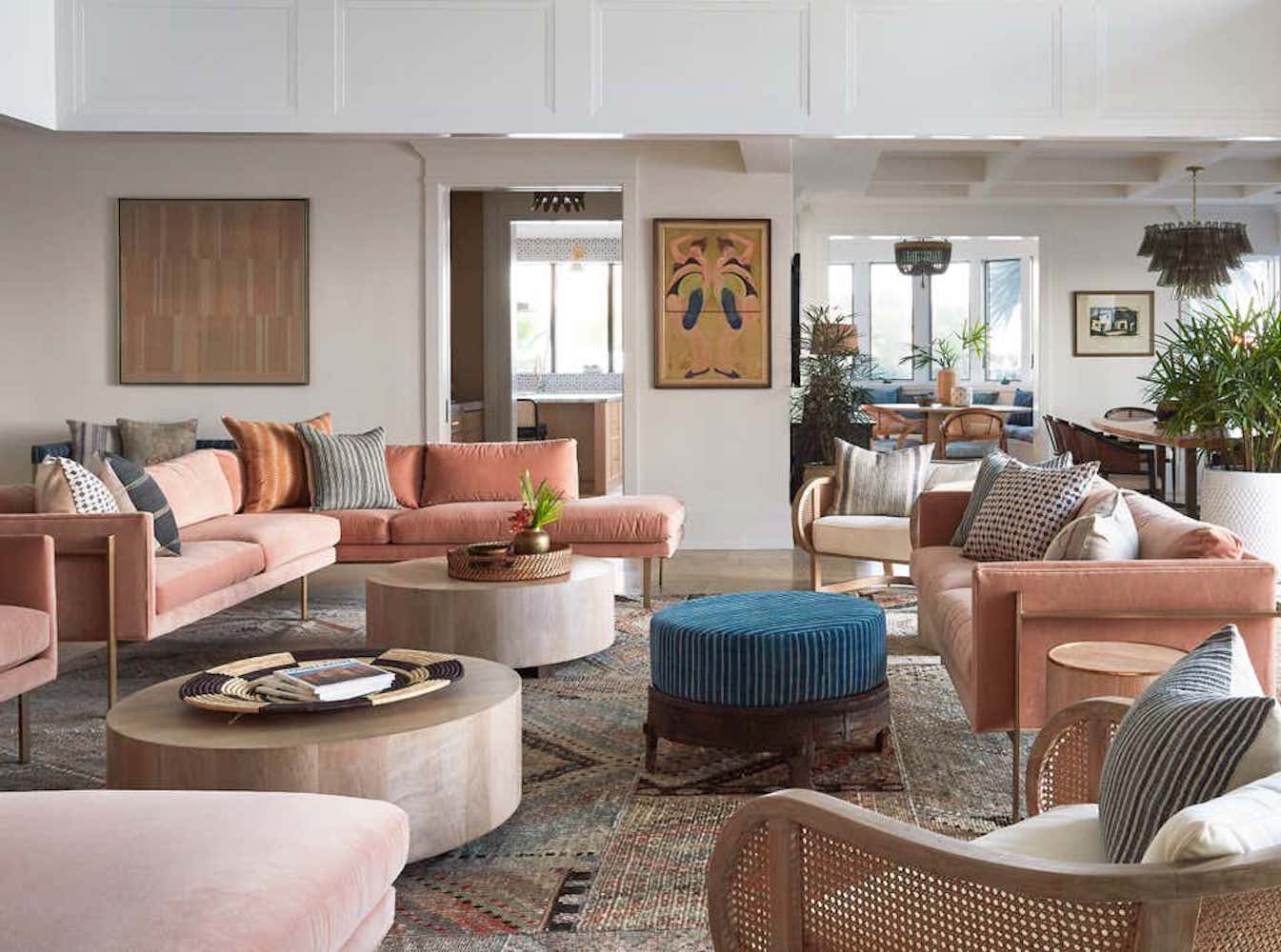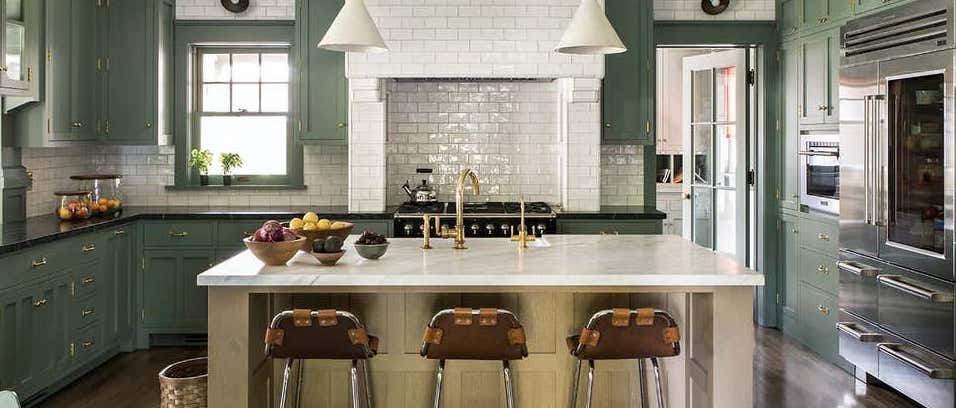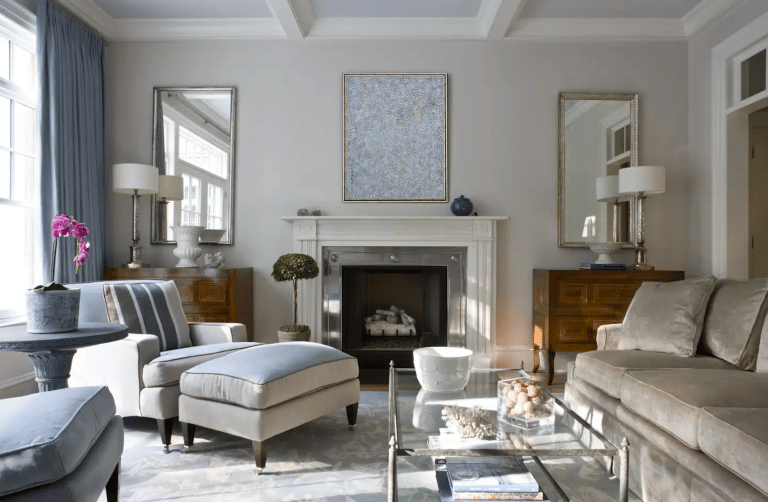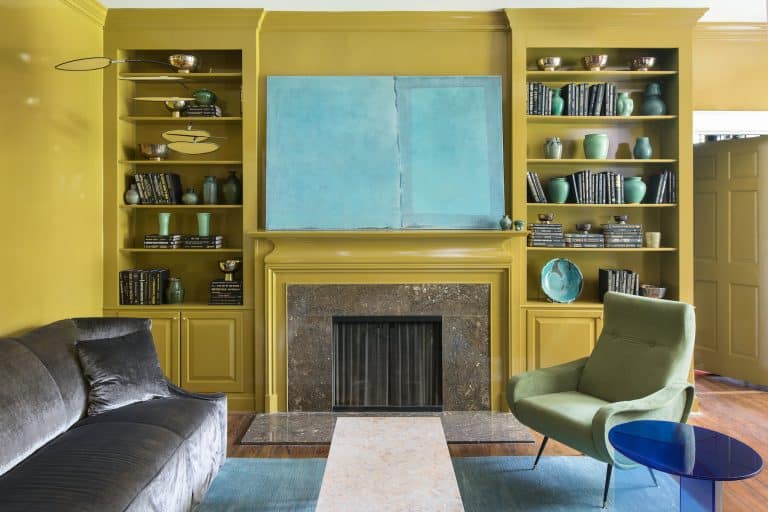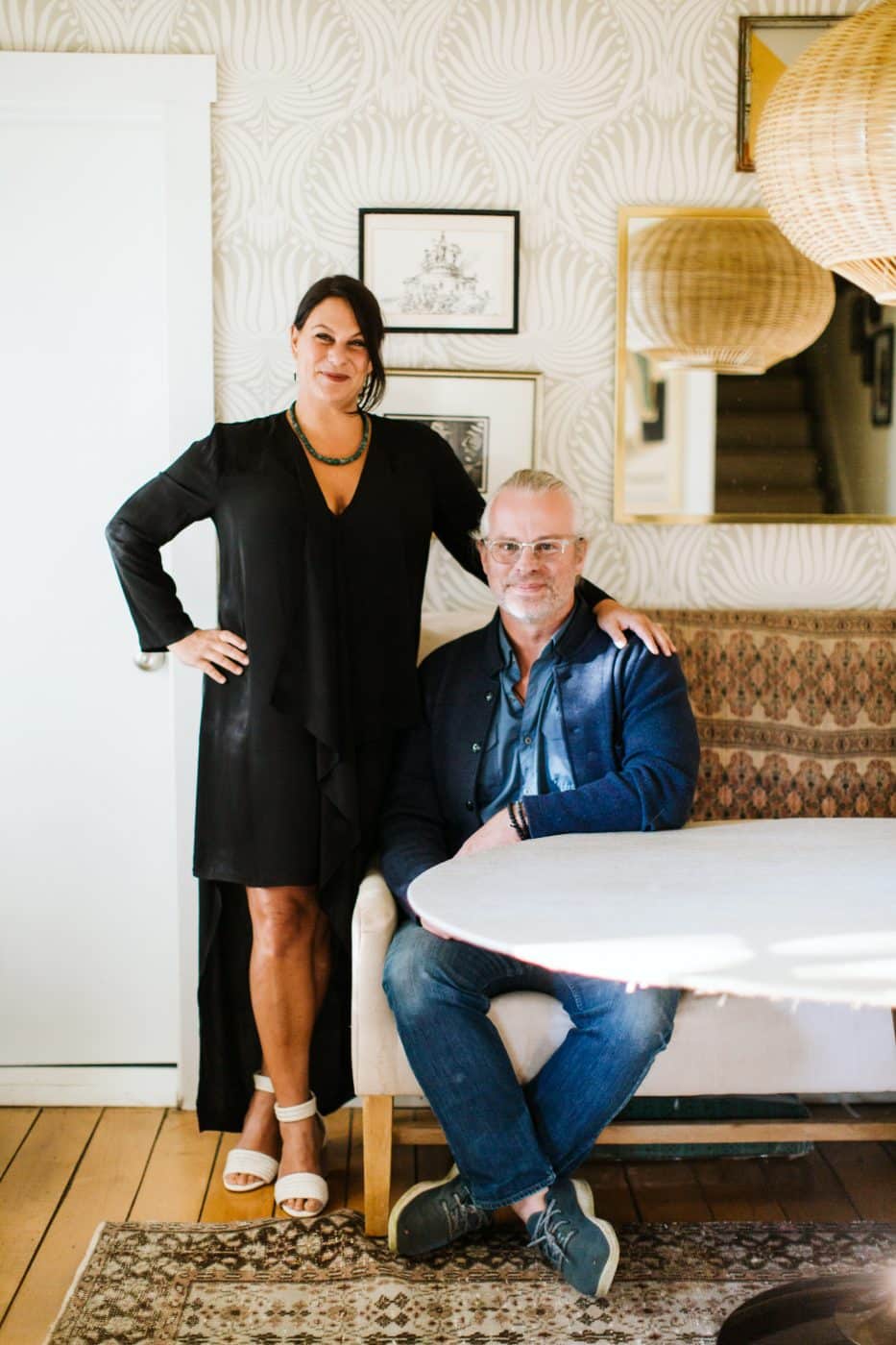
October 24, 2021Rebekah Zaveloff and KitchenLab Interiors cofounder Nick Nichols share a passion for older homes, hospitality and providing clients with spaces that are welcoming. The couple, now married, met when they were both working at a restaurant and formed a business and personal partnership that has been going strong for more than 20 years.
Their Chicago-based design firm specializes in the rehab of older homes — places clients are passionate about, but need to modernize just enough to make them functional. The team at KitchenLab often finishes a project with a mix of vintage and modern pieces, creating layered spaces that reflect the architecture and pedigree of the house. Introspective sat down with the pair — she is the principal designer; he is the firm’s CFO — to discuss the philosophy behind their successful partnership.
Let’s start with the name.
Nichols: We’ve struggled with it for years. We started as a kitchen-design firm but have evolved from there. We joke that we should have called our company Adjacent Spaces Design.
How has your background in hospitality influenced your design?
Zaveloff: Waiting tables and working in a restaurant is one hundred percent about reading a room. It teaches you how to interact with people, how to take care of people. And great design is like a great restaurant — your aim is to create a space where people want to hang out, where they feel welcome and there’s thoughtfulness behind each decision.
Do you have a favorite period for architecture?
Zaveloff: I’m a sucker for a Victorian brownstone with modern lighting and a mix of furnishings. I love the moldings, arches, maximalism! The eighteen nineties to nineteen tens have long been my passion.
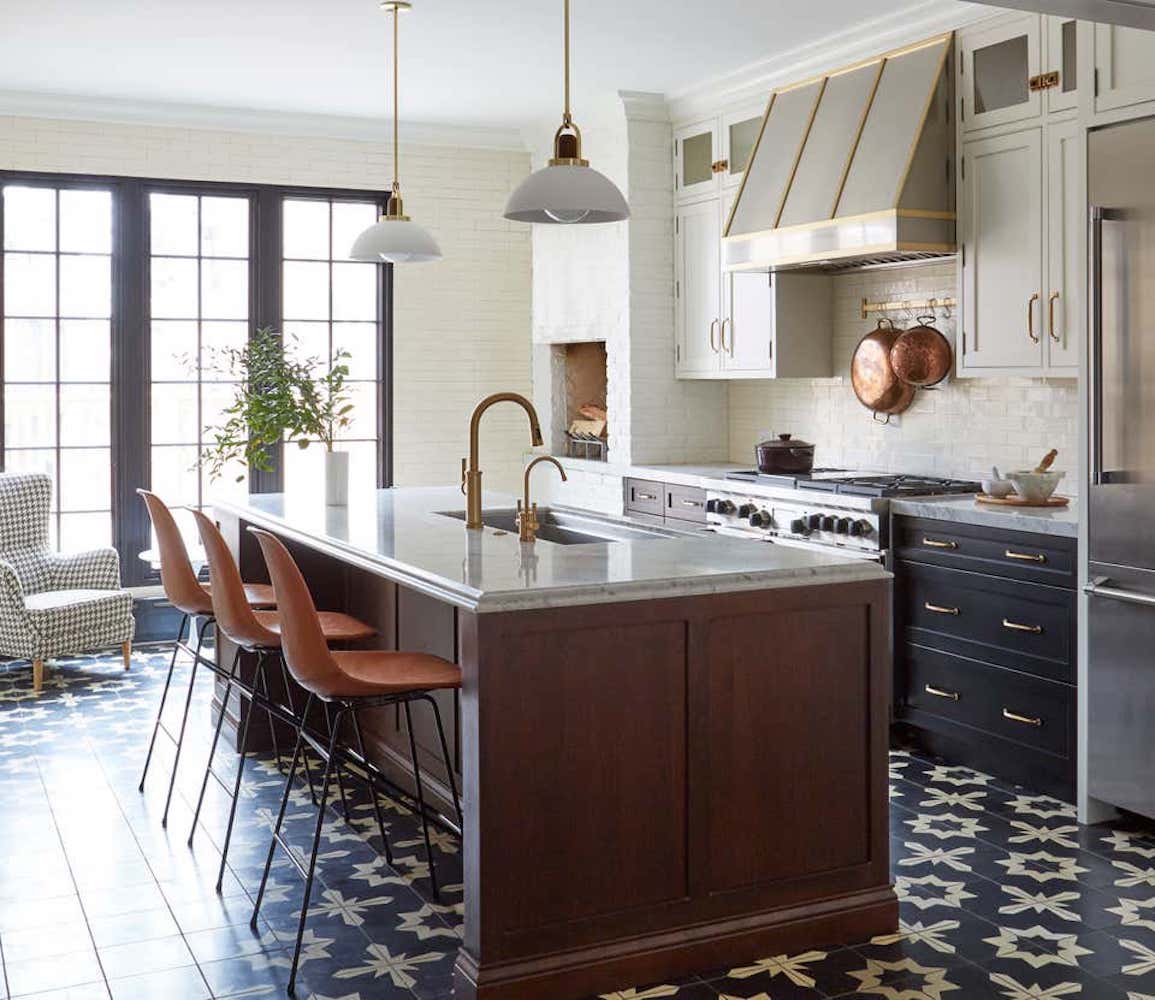
Design icon?
Zaveloff: It has to be David Hicks. He was fearless in his use of pattern and mixing old and new. I love anything handmade — block-printed wallpaper, handwoven fabrics. It’s seeing the human hand in the making of the item.
Favorite historic house?
Zaveloff: Vizcaya Museum and Gardens in Miami.
Where do you find inspiration?
Zaveloff: For both of us, it’s probably the Fondation Maeght, in Saint-Paul de Vence, France. This visionary couple [Aimé and Marguerite Maeght] created a place to hold their collection of amazing sculptures and art. The gardens are incredibly well thought out, with the greenery playing against the stone. It’s old and modern conversing, and it’s just fascinating. We can’t wait to get back.
Who’s your favorite furniture designer?
Zaveloff: I’ve been a huge Milo Baughman fan from early on.
Favorite artists?
Zaveloff: Eva Hesse and Cy Twombly — they couldn’t be more different, but both artists are very important to me.
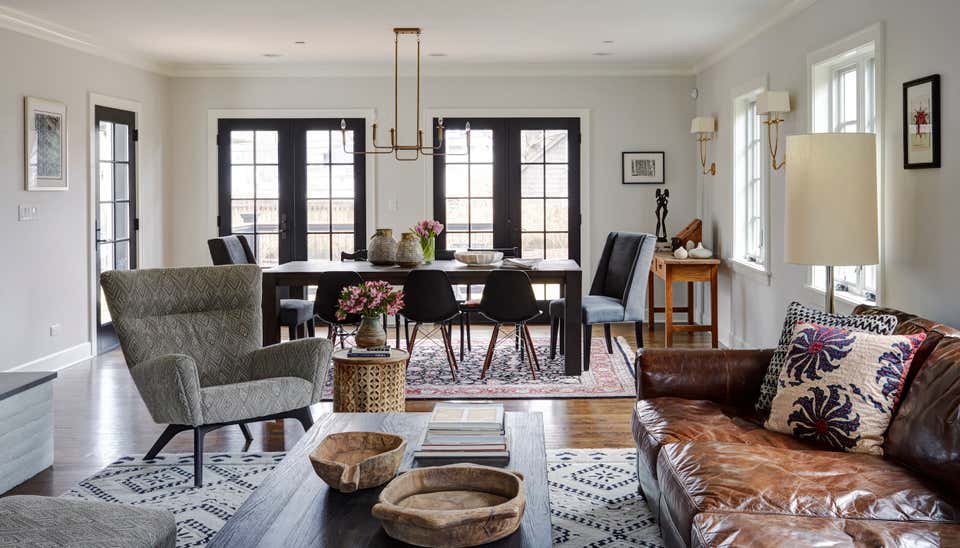
If you could live anywhere in the world, where would that be?
Zaveloff: Brutal question! I want to live everywhere! I think I’d have to say it’s a split between Marrakech and Atrani, which is a little town near Amalfi that isn’t dense or touristy. But honestly, my favorite place on earth is our little farmhouse in southwest Michigan, which is surrounded by vineyards. A friend said the other day, “How did you manage to find France in the middle of Michigan!?”
Dream project?
Nichols: We are passionate about old houses — nutty for them, really. Our clients are typically people who love their vintage homes, but they’re looking for someone to bring it up to modern standards with updated kitchens and storage.
Most underappreciated design idea?
Zaveloff: Cased openings to divide rooms visually and psychologically while maintaining a sense of openness and connection.
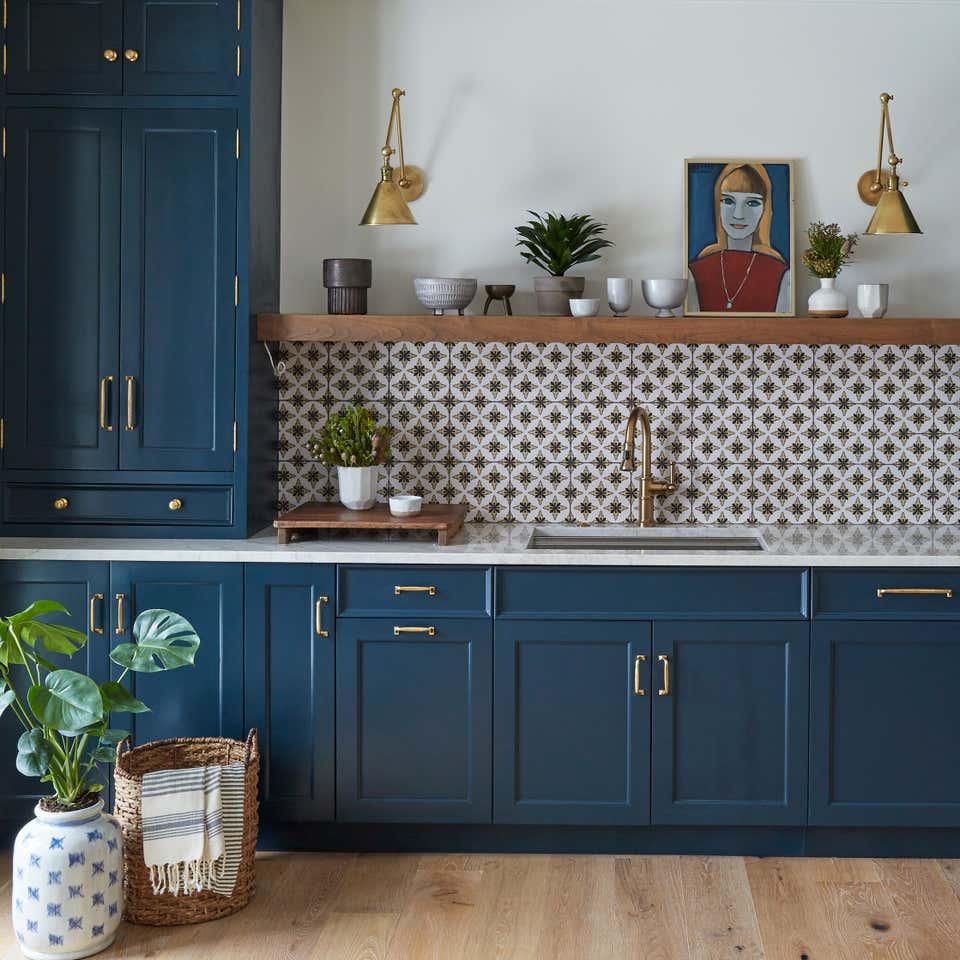
Accomplishment you’re proudest of?
Zaveloff: Often when clients come to us, they’ve been collecting inspiration images for years. When we sit down with them, it turns out the majority of those images are of work KitchenLab Interiors has done. It’s rewarding because our work doesn’t all look the same.
Best advice you give clients?
Zaveloff: Don’t start to settle at the end of the project because you’re fried. Renovation fatigue is real, but it’s important to not cut corners just because you want to move in.
What sets KitchenLab Interiors apart?
Zaveloff: We start with space planning. We don’t talk about aesthetics until the second or third meeting. It’s too easy to get caught up in the details and not focus on how the whole house will speak together. It’s critical to solve the flow problems and get the space planning right.
Nichols: We have a lot of enthusiasm for what we do, and we don’t work on projects we’re not excited about. A lot of “nos” went into getting to where we are today.
